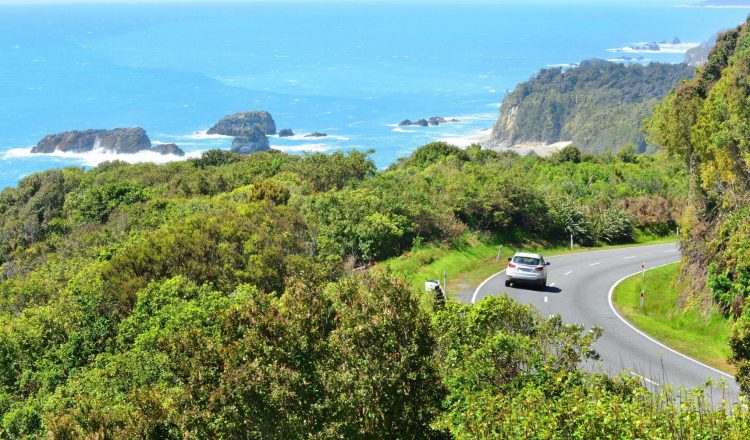Sharing the road
Sharing the road with cyclists
People on bicycles are more vulnerable on the road as they are less protected than other road users. Because of this, you should be alert and drive carefully when near them.
Top tips for sharing the road safely with people on bikes:
- Take special care and slow down when passing. They may need to move unexpectedly and not have an opportunity to signal their intentions.
- Indicate clearly and in plenty of time when turning and stopping.
- Know your blind spots, especially when driving vans, trucks or buses, and check again for cyclists.
- Take another look at intersections. Cycles are smaller than other vehicles and may not be easily seen.
- Avoid overtaking a cyclist just before you turn at an intersection.
- Take care when passing cyclists on the open road. Slow down and, ideally, leave at least 1.5 metres of space between you and the cyclist.
- Check rear-view mirrors and look over your shoulder before you open a car door at the roadside.
- Slow down and be alert when visibility is reduced. Cyclists are often hard to see, and are even more so in the rain or in low-light conditions.
Sharing the road with pedestrians
On average, 36 pedestrians are killed and 1000 pedestrians are injured on New Zealand roads every year. Many of these deaths and injuries could be prevented if drivers took more care when using our roads. Please look out for pedestrians whenever you’re behind the wheel.
- Always be ready to stop near schools, bus stops and pedestrian crossings.
- Be careful when driving past parked vehicles. Pedestrians may walk out without warning.
- You must slow down to 20km/h when passing or coming towards a school bus that has stopped to let children on or off, no matter which side of the road you are on.
- Watch out for elderly people or people with disabilities.
- Take special care near roadside stalls and parked vendors. Pedestrians visiting these may forget to watch for traffic when crossing the road.
A pedestrian crossing is an area of road that has white stripes marked across it. It is used by pedestrians and people using mobility devices (such as motorised wheelchairs and similar devices) and wheeled recreational vehicles (such as skateboards and foot-propelled scooters).
Some crossings have raised islands in the middle, creating a ‘refuge’ where pedestrians can stop. These are helpful for pedestrians crossing wide, two-way roads or multi-lane roads, because they allow them to walk across one direction of traffic at a time.
As you drive towards a pedestrian crossing, you will see pedestrian crossing signs before the crossing and black and white poles at the crossing. The poles are mounted with fluorescent orange disks, or round yellow lights that flash at night. White diamonds are generally painted on the road before the crossing and a white limit line shows you where to stop.
When coming up to pedestrian crossings:
- slow down and be ready to stop for any pedestrians stepping onto, or on, the crossing – this also includes people obviously waiting to use the crossing
- if there is no raised traffic island in the middle of the crossing, stop and give way to pedestrians on any part of the crossing
- if there is a raised traffic island in the middle of the crossing, stop and give way to pedestrians on your half of the road
- wait until the pedestrian has crossed in front of you and is clear of your vehicle before you proceed (see page 145 for the definition of giving way).
Sharing the road with tractors
You will sometimes see tractors and other farm or construction machinery on New Zealand roads. Because they are large and usually travel slower than other vehicles, you need to be especially careful when driving near them.
- Begin to slow down as soon as you see a tractor ahead of you and watch out for any warning beacons.
- Be patient while driving behind tractors – a few minutes of travelling at a slow speed is better than risking a crash.
- Be extremely careful when passing and only pass when it is safe and legal to do so
- Remember that tractors often have wide or long loads, which can make passing more difficult.
- Be especially careful around tractors that have just stopped, as they may actually be about to turn.
Sharing the road with trucks and buses
Following trucks and buses:
- Remember the two-second rule – following too closely will limit your visibility, give you less time to stop and may put you in the truck or bus driver’s blind spots.
- In wet weather, increase your following distance to four seconds. This will keep you away from any water spraying from the wheels of the bus or truck that could reduce your visibility, and will also give you more time to stop.
- Drivers of buses and trucks often have large blind spots behind and at the side of their vehicle, so it is a good idea to position your vehicle far enough back so it can be seen in their side mirrors. This will let the truck or bus driver know you are there.
Overtaking trucks and buses
Because it takes several seconds longer to pass a truck or bus than it does to pass a car, it’s important to make sure you have plenty of clear road ahead to safely pass without going over the speed limit.
Oncoming trucks and buses:
When driving past an oncoming truck or bus (one travelling in the opposite direction), drivers should keep firm control of the steering wheel to counter the effect of any air turbulence. Remember, trucks and other large vehicles take up more room on the road when travelling around bends and at intersections, and may not always stay entirely in their own lane.

















































